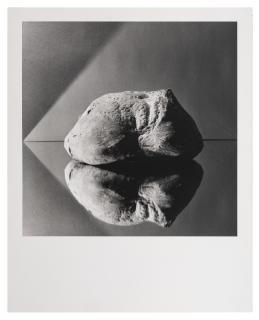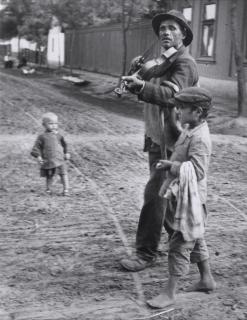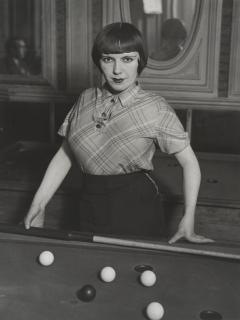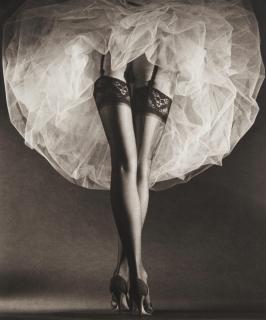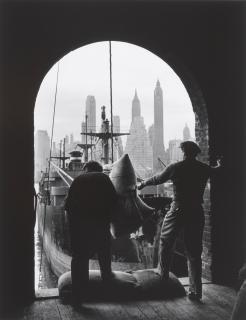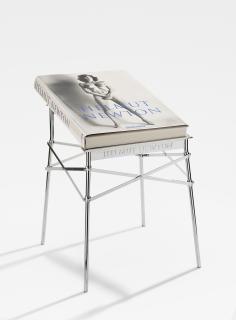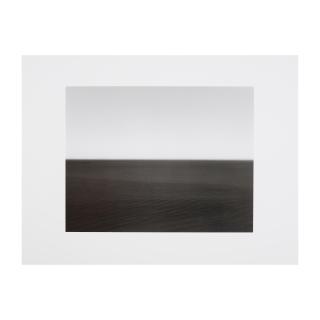Dieter Appelt born 1935 in Niemegk, Germany
The artist Dieter Appelt
- Began his career as a professional opera singer.
- Primarily known as a photographer, but also painter, sculptor, video and action artist.
- Most prominent are Appelt's black-and-white photographs of his own body.
When the Art Institute of Chicago dedicated a retrospective to Dieter Appelt in 1994, he already had an extensive career behind him. He was born in Niemegk on March 3, 1935, and studied music and singing in Leipzig. A few years later, Appelt moved to Berlin, where he also studied photography and experimental photography with Heinz Hajek-Halke. He worked as a singer in the chorus of the Deutsche Oper Berlin from 1961 to 1979 and was involved in photography, painting and sculpture in parallel.
Appelt is best known for the black-and-white photographs of his own body that he made from the mid-1970s. Sometimes naked, sometimes clothed, he staged himself, reflecting on themes such as birth and death and processing traumatic war experiences of his childhood. From these years, the photographs of his hands in particular, sometimes covered with plaster, linen, or marble dust, are exemplary of his work. Appelt finds in the images of his hands, which are in no way inferior to photographs of faces, a strong expression of melancholy and suffering.
In 1982 Appelt was appointed professor of film, video and photography at the Berlin University of the Arts, where he himself had studied, for 18 years. At this time he turned to more abstract themes and new techniques. In his tableaus, some of which consist of over 500 individual photographs, he explores the relationship of photography to time and the capturing of a moment. Memories and the present are intermingled in the works. Theatrically influenced performances have also found increasing significance in Appelt's oeuvre over the years. In recent years he has experimented with the interaction of ink drawings and sounds. In this process, the structure of the drawing shapes the soundtrack, which consists of non-instrumental sounds. He compares the sounds to audio tracks recorded by NASA during space interceptions.
The major retrospective of 1994 was shown in Chicago as well as in Québec, New York, New Orleans, and Berlin. Appelt was invited to the Venice Biennale in 1990 and 1999. His works are in the Berlinische Galerie and the Neue Nationalgalerie in Berlin, the Museum of Modern Art and the Metropolitan Museum of Art in New York, the Centre Pompidou in Paris, the Los Angeles County Museum of Art, and the National Portrait Gallery in London, among others.
Der Künstler Dieter Appelt
- Begann seine Karriere als professioneller Opernsänger.
- Vorrangig als Fotograf bekannt, aber auch Maler, Bildhauer, Video- und Aktionskünstler.
- Prominent sind vor allem Appelts Schwarz-Weiß-Fotografien seines eigenen Körpers.
Als das Art Institute of Chicago Dieter Appelt 1994 eine Retrospektive widmete, hatte dieser bereits eine umfassende Karriere hinter sich. Er wurde am 3. März 1935 in Niemegk geboren und studierte Musik und Gesang in Leipzig. Einige Jahre später wechselte Appelt nach Berlin, wo er zusätzlich Fotografie und Experimentelle Fotografie bei Heinz Hajek-Halke studierte. Er arbeitete von 1961 bis 1979 als Sänger im Chor der Deutschen Oper Berlin und befasste sich parallel mit Fotografie, Malerei und Bildhauerei.
Bekannt ist Appelt vor allem für die Schwarz-Weiß-Fotografien seines eigenen Körpers, die er ab Mitte der 1970er anfertigte. Mal nackt, mal bekleidet inszeniert er sich selbst, reflektiert dabei Themen wie Geburt und Tod und verarbeitet traumatische Kriegserfahrungen seiner Kindheit. Aus diesen Jahren sind besonders die Fotografien seiner Hände, die mal mit Gips, Leinen oder Marmorstaub bedeckt sind, beispielhaft für sein Schaffen. Appelt findet in den Abbildungen seiner Hände, die Fotografien von Gesichtern in nichts nachstehen, einen starken Ausdruck der Melancholie und des Leids.
1982 wurde Appelt für 18 Jahre als Professor für Film, Video und Fotografie an die Hochschule der Künste Berlin berufen, an der er selbst studiert hatte. Zu dieser Zeit wendet er sich abstrakteren Themen und neuen Techniken zu. In seinen Tableaus, die aus teilweise über 500 einzelnen Fotos bestehen, untersucht er das Verhältnis von Fotografie zu Zeit und das Festhalten eines Augenblicks. Erinnerungen und Gegenwart vermengen sich in den Werken. Auch theatralisch geprägte Performances finden über die Jahre eine immer größere Bedeutung in Appelts Œuvre. In den letzten Jahren experimentierte er mit dem Zusammenwirken von Tuschezeichnungen und Geräuschen. Die Struktur der Zeichnung formt dabei die Tonspur, die aus nichtinstrumentalen Tönen besteht. Er vergleicht die Geräusche mit Tonspuren, die die NASA bei Weltraumabhörungen aufgenommen hat.
Die große Retrospektive von 1994 war neben Chicago auch in Québec, New York, New Orleans und Berlin zu sehen. Appelt wurde 1990 und 1999 zur Biennale in Venedig eingeladen. Seine Werke befinden sich unter anderem in der Berlinischen Galerie und der Neuen Nationalgalerie in Berlin, dem Museum of Modern Art und dem Metropolitan Museum of Art in New York, dem Centre Pompidou in Paris, dem Los Angeles County Museum of Art und der National Portrait Gallery in London.






























